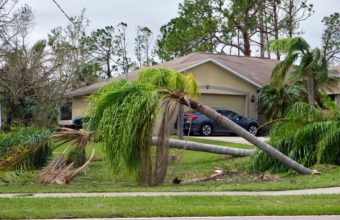When a tree is cut down, the visible part of the tree is removed, but the roots remain in the ground. What happens to these roots afterward depends on several factors, including the species of the tree, the conditions of the soil, and the environment.
Here’s a general overview of the processes and outcomes…
Decomposition
- Natural Breakdown – Over time, the roots left in the ground will begin to decompose naturally. This process is facilitated by microorganisms in the soil, such as bacteria and fungi, as well as insects and other soil-dwelling organisms. The rate of decomposition varies widely depending on the tree species, the size of the roots, soil conditions (moisture, temperature, pH), and the presence of decomposers. Decomposition can take several years for large roots.
- Nutrient Release – As the roots decompose, they release nutrients back into the soil, which can benefit the surrounding vegetation. The initial decomposition process can temporarily deplete the soil of nitrogen, as microorganisms use nitrogen to break down the woody material.
Potential for Sprouting
- Depends on the Tree Species – Some tree species have the capability to sprout from the remaining roots after the tree has been cut down. This process, known as suckering or coppicing, can lead to new tree growth if the roots are still alive and healthy. Species that are prone to this include willow, poplar, and some species of maple and elm, among others.
- Management – If unwanted regrowth occurs, it may require ongoing management to prevent the sprouts from developing into new trees. This can involve physically removing the sprouts or applying specific herbicides designed to suppress root sprouting.
Impact on Soil and Surrounding Area
- Soil Stability – The roots help maintain soil stability, preventing erosion. As they decompose, changes in soil structure may occur, potentially affecting drainage and soil compaction.
- Habitat for Wildlife – Decomposing roots can provide habitat for various soil organisms, contributing to the biodiversity of the soil ecosystem.
Obstructions and Hazards
- Underground Obstructions – Even as they decompose, tree roots can remain as obstructions in the soil for several years, potentially interfering with gardening, landscaping, or the installation of underground utilities.
- Pests and Diseases – In some cases, decaying roots can attract pests or foster diseases, which may pose risks to other plants in the area.
After a tree is cut down, its roots will gradually decompose, a process that can have both beneficial and challenging implications for the soil and surrounding landscape. The specific outcomes largely depend on the tree species and environmental conditions.






